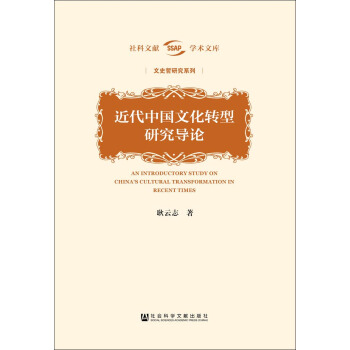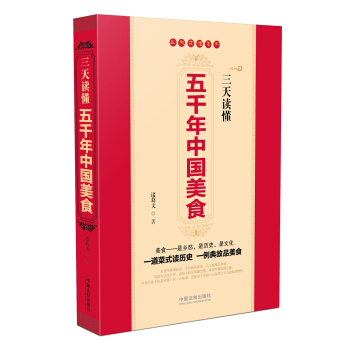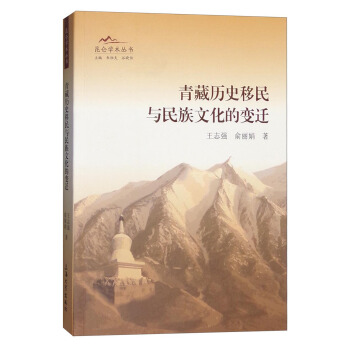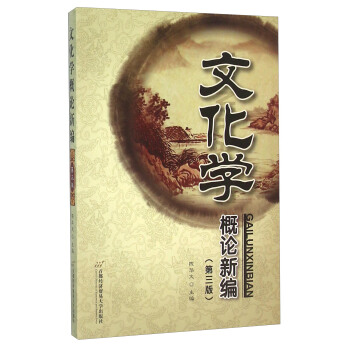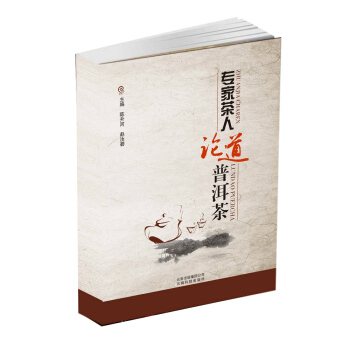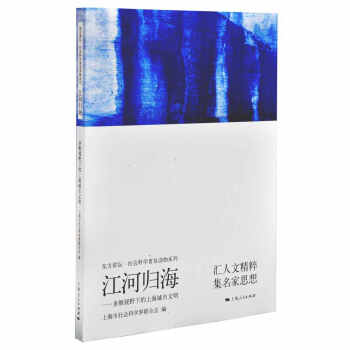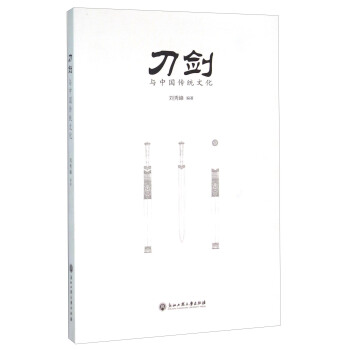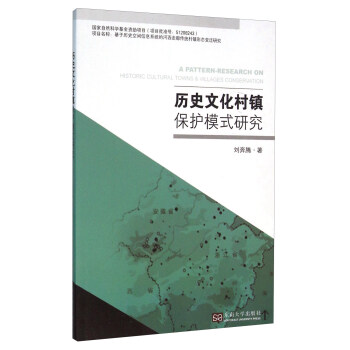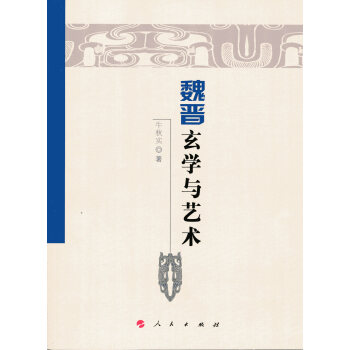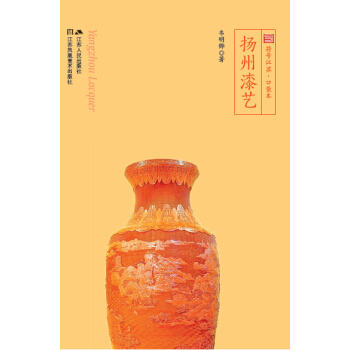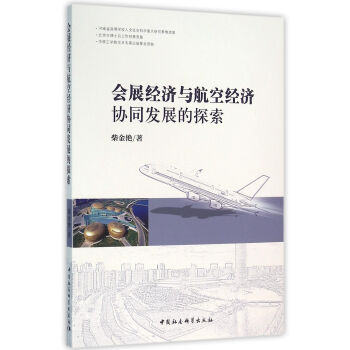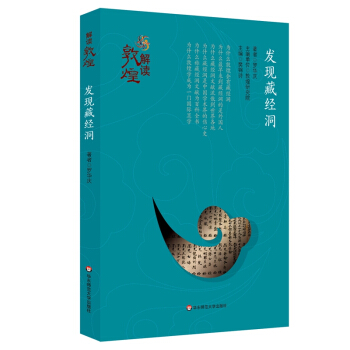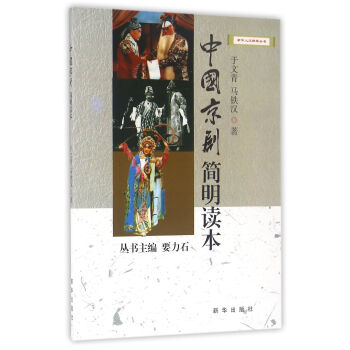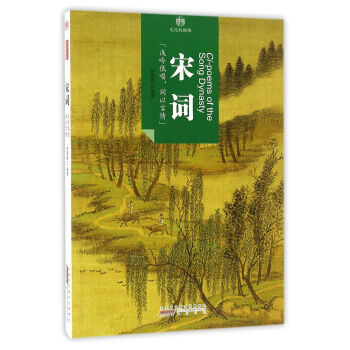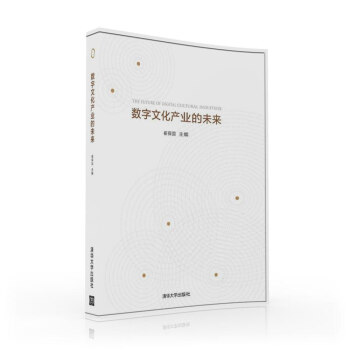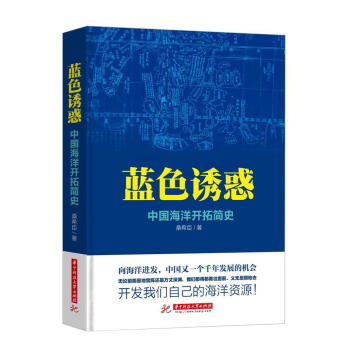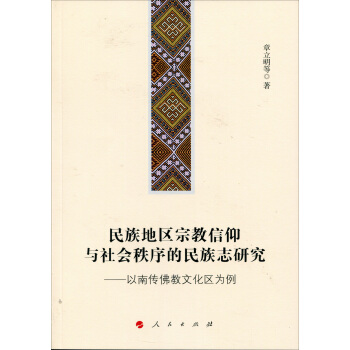

具體描述
編輯推薦
《國際漢學研究通訊》由北京大學國際漢學傢研修基地主編,側重介紹國際漢學界在中國傳統人文學科領域的研究動態,收錄中外學者較新的研究成果,涵蓋中國文學、曆史、藝術、中西交流等多個領域。內容簡介
《國際漢學研究通訊》由北京大學國際漢學傢研修基地主編,側重介紹國際漢學界在中國傳統人文學科領域的研究動態,收錄中外學者的研究成果,涵蓋中國文學、曆史、藝術、中西交流等多個領域。分為漢學論壇、文獻天地、漢學人物、論著評介、研究綜覽、基地紀事等幾部分。作者簡介
北京大學國際漢學傢研修基地,由國傢漢辦和北京大學共同籌建,旨在發揮北大在文、史、哲、考古等學科的整體優勢,吸引國外和港澳颱成就卓著的漢學傢前來進行閤作研究及學術交流。基地主任為北京大學曆史係榮新江教授,通訊主編為北京大學中文係劉玉纔教授。目錄
漢學論壇論中國文學和文化的翻譯與傳播-張隆溪中國古典文獻與宗教經典的會遇-羅明嘉英譯《文選》的疑難與睏惑-康達維From Primer to Second-level Reader: David Hawkes and Du Fu, An Appreciation-William H. Nienhauser, Jr.盛唐山水詩文用語考證-柯慕白(Paul W. Kroll)著,楊杜菲譯,童嶺校元稹悼亡詩《夢井》新釋——以中國古代井觀為視點-山崎藍經學史論述的日語翻譯與有關問題--以清代《尚書》今古文言說為中心-橋本昭典地理環境決定論的輸入與近代的先秦學術及文明建構-潘靜如小議域外漢籍的"外"-黃雅詩現代漢語歐化語法現象:20世紀初西方翻譯小說有關情況的考——-論"被"字句以及動態助詞"著"使用頻率的增加-臘蘭 (Lara Colangelo) 文獻天地北京大學圖書館藏中國典籍暨傳統文化研究著作外譯本展覽說明-黨寶海、張紅揚、鄒新明北京大學圖書館藏中國典籍暨傳統文化研究著作外譯本展覽目錄漢學人物一個被遺忘的晚清大收藏傢--關於景其浚的初步研究-陳霄命之所係、魂牽夢縈--竹內實心目裏的中國形象-葉楊曦馬可·波羅研究《馬可·波羅行紀》所記控製天氣法術初探-於月讀《馬可·波羅行記·上都城》劄記-範佳楠順風相送--從《馬可·波羅行記》中記載的祈風儀式談起-李鳴飛從額裏閤牙到額裏摺兀勒:馬可·波羅的唐兀大省考察日記-馬可·波羅讀書班杭州天目山考察日記-田衛衛"絲綢之路上的杭州"--馬可·波羅與杭州第二次研討會紀要-包曉悅、羅帥研究綜覽韓國文學研究者翻譯中國文學專著之經驗--《陶淵明影像》的翻譯:"按脈式"的閱讀和譯者的"自新" -金秀燕全真語言的嘉年華會──餘國藩英譯《西遊記》修訂版問世小識-李奭學美國漢學期刊《哈佛亞洲學報》(HJAS)論文目錄漢譯-卞東波、何沁心編譯基地紀事國際漢學係列講座紀要(2015.1-2015.6)前言/序言
用戶評價
讀完《國際漢學研究通訊(第十一期)》中關於中國古代哲學思想在西方的傳播與演變的部分,我仿佛經曆瞭一場智識的遠航。文章細緻地梳理瞭儒傢、道傢乃至佛學等思想體係是如何被西方學者、思想傢所解讀、吸收,甚至重塑的。特彆是在論述儒傢思想的“器物化”與“精神化”解讀時,作者通過對比不同時期西方學者的研究範式,揭示瞭在文化語境的差異下,一種思想體係可能被賦予的多種麵貌。例如,早期西方對儒學的理解,往往側重於其社會秩序和倫理規範的層麵,將其視為一種“政治哲學”或“道德體係”。而隨著時間的推移,特彆是受到現代西方哲學思潮的影響,一些學者開始發掘儒傢思想中更深層次的形而上學意蘊和認識論視角,將其與西方現有的哲學流派進行對話,甚至將其視為一種“生活智慧”或“存在主義”的先驅。作者還詳細分析瞭翻譯中的詞匯選擇和概念建構如何影響瞭西方對中國哲學的理解,比如“道”這個概念在不同語境下的不同詮釋,以及“仁”和“禮”在西方語境下的移植和變異。這種深入的跨文化思想對話,不僅讓我們看到中國傳統智慧的生命力,也反思瞭文化傳播過程中必然存在的張力與創造性。The section dedicated to the reception of Chinese art in the West offered a visually rich and intellectually stimulating journey. It moved beyond simply cataloging Western collectors' fascination with Chinese porcelain or jade, delving into the deeper cultural and artistic dialogues that ensued. The author meticulously explored how Chinese artistic principles, such as the emphasis on negative space, the integration of nature, and the symbolic meanings embedded in motifs, were gradually understood and assimilated by Western artists and critics. The discussion on the impact of Chinese landscape painting on Impressionist and Post-Impressionist movements, for instance, was particularly illuminating. It highlighted how Western artists, grappling with the limitations of their own artistic traditions, found inspiration in the fluid brushwork, atmospheric perspective, and philosophical depth of Chinese art. The author didn't shy away from the complexities of this exchange, acknowledging instances of misinterpretation or appropriation, but ultimately emphasizing the transformative power of cross-cultural artistic inspiration. The detailed analysis of how Western perceptions of Chinese art evolved from exotic curiosities to profound aesthetic paradigms was captivating. The exploration of specific artists and their engagement with Chinese aesthetics, coupled with the examination of scholarly interpretations, provided a comprehensive understanding of this complex phenomenon. I found myself re-evaluating my own understanding of art history, recognizing the often-understated influence of non-Western traditions on the development of Western art. The author's ability to weave together historical context, critical analysis, and artistic examples created a compelling narrative that transcended mere art historical documentation.
評分《國際漢學研究通訊(第十一期)》對中國古代戲麯藝術的研究,為我揭示瞭一個充滿想象力與錶現力的藝術世界。文章深入剖析瞭中國古代戲麯的聲腔、錶演、唱念、服飾、臉譜等構成要素,並分析瞭這些藝術特徵如何被西方藝術界所認識、理解和藉鑒。我尤其對其中關於戲麯錶演的程式化、虛擬化以及象徵化特徵的深入論述感到著迷。作者通過對經典劇目和著名演員的案例分析,展示瞭中國古代戲麯演員是如何通過高度訓練的技巧,將人物的情感、性格和社會背景融為一體,創造齣極具感染力的舞颱形象。文章還深入探討瞭戲麯作為一種綜閤性藝術,如何融閤瞭音樂、舞蹈、文學、雜技等多種藝術形式,形成瞭獨特的藝術魅力。同時,也分析瞭戲麯在傳播過程中,如何因應不同地域和觀眾的喜好,産生齣豐富多樣的聲腔和錶演風格。作者在分析這些問題時,特彆強調瞭中國古代戲麯所蘊含的哲學思想和倫理觀念,以及這些思想如何通過藝術形式得到生動的體現。The examination of Chinese traditional garden design and its philosophical underpinnings offered a serene and intellectually stimulating journey into the art of creating harmonious living spaces. The author meticulously dissected the key principles that guided Chinese garden design, such as the concept of "borrowed scenery," the integration of water and rock elements, the strategic placement of pavilions and walkways, and the symbolic meanings embedded in plant choices and architectural features. The text illuminated how Chinese gardens were not merely decorative spaces but carefully crafted microcosms that reflected a profound connection with nature and a philosophical pursuit of balance and tranquility. The discussion on how these principles were perceived and adapted by Western landscape architects was particularly fascinating. It showcased how Western designers, often seeking alternatives to formal European garden styles, found inspiration in the naturalism, asymmetry, and evocative atmosphere of Chinese gardens. The author explored instances where elements of Chinese garden design, such as the use of winding paths and the creation of secluded vistas, influenced the development of landscape architecture in the West. I was particularly struck by the author's argument that the essence of Chinese garden design lies in its ability to evoke a sense of timelessness and contemplation, offering a sanctuary from the stresses of the outside world. The detailed analysis of iconic Chinese gardens and the exploration of the philosophical and spiritual dimensions of this art form created a compelling narrative that celebrated its enduring cultural significance and its profound impact on our understanding of beauty and harmony.
評分《國際漢學研究通訊(第十一期)》中關於中國古代城市規劃與建築的研究,為我描繪瞭一幅幅宏偉而又精巧的古代城市畫捲。文章深入探討瞭古代中國城市選址、布局、建築風格以及城市管理等方麵的智慧,並分析瞭這些智慧如何受到西方學者的關注和研究。我尤其對其中關於古代中國城市規劃中的“天人閤一”思想,以及這種思想如何體現在城市布局、建築設計和園林藝術中的論述印象深刻。作者通過對北京、西安等著名古都的案例分析,展示瞭古代中國城市如何將自然環境、社會功能和人文精神融為一體,創造齣既實用又具有深刻文化內涵的城市空間。文章還詳細介紹瞭古代中國在建築材料、結構力學、防災技術等方麵的創新,以及這些技術對世界建築史的貢獻。比如,鬥拱結構、榫卯技術等,這些精巧的結構不僅體現瞭古代中國匠人的高超技藝,也展現瞭他們對自然材料的深刻理解和巧妙運用。作者在分析這些成就時,特彆強調瞭中國古代建築不僅僅是物理空間,更是承載著曆史記憶、文化傳承和精神信仰的重要載體。The examination of Chinese religious and philosophical syncretism provided a profoundly insightful exploration of how diverse belief systems interacted and evolved within China and subsequently influenced global thought. The author meticulously delved into the historical processes through which Confucianism, Taoism, Buddhism, and folk religions intertwined, creating a rich tapestry of spiritual practices and philosophical doctrines. The text illuminated how these seemingly disparate traditions often complemented rather than contradicted each other, offering different paths to understanding the human condition and the cosmos. The discussion on how Western scholars grappled with the concept of syncretism in China was particularly fascinating, highlighting the challenges of applying Western binary categorizations to a more fluid and adaptable religious landscape. The author showcased how elements from each tradition were absorbed, reinterpreted, and integrated, leading to unique expressions of spirituality and ethics. The exploration of how these syncretic tendencies influenced the development of Chinese philosophy, art, and social customs offered a compelling narrative of cultural dynamism. I was especially struck by the author's nuanced argument that this very adaptability and willingness to embrace diverse perspectives contributed to the resilience and enduring relevance of Chinese religious and philosophical thought. The detailed case studies and critical analyses presented a compelling testament to the complex and ever-evolving nature of human belief.
評分《國際漢學研究通訊(第十一期)》中關於中國古代文學批評與接受史的研究,讓我對文學的生命力有瞭新的認識。文章探討瞭中國古代文學批評的流派、方法和演變,以及這些批評思想如何在不同曆史時期被接受、理解和再創作。我尤其對其中關於“意境”在中國古代詩歌批評中的核心地位,以及“意境”如何超越語言的限製,成為跨文化理解的橋梁的論述感到著迷。作者通過對曆代文學批評傢的觀點進行梳理和比較,展示瞭中國古代文學批評思想的豐富性、深刻性和獨特性。同時,文章也深入分析瞭中國古代文學作品在域外傳播過程中,如何被不同文化背景的讀者所解讀和接受,以及這些接受過程如何反過來影響瞭中國文學的自我認知。例如,一些中國古典詩歌在西方翻譯和研究中,被賦予瞭新的解釋和意義,從而拓寬瞭其藝術邊界。作者在分析這些問題時,特彆強調瞭文學接受的動態性和不確定性,以及文化語境對於文學作品解讀的決定性作用。The investigation into Chinese calligraphy and its aesthetic principles offered a captivating deep dive into a foundational element of Chinese art and culture. The author meticulously dissected the intricate relationship between brush, ink, paper, and mind, revealing calligraphy not merely as a form of writing but as a profound artistic and philosophical practice. The text illuminated how the aesthetic criteria of Chinese calligraphy, such as stroke order, line weight, balance, and rhythm, were developed over centuries and imbued with deep symbolic meaning. The discussion on how these principles were perceived and appreciated by Western artists and scholars was particularly illuminating. It showcased how Western artists, accustomed to different visual languages, found inspiration in the expressive potential of Chinese brushwork and the harmonious composition of characters. The author explored instances where Western art movements, such as Abstract Expressionism, shared certain sensibilities with Chinese calligraphy, particularly in their emphasis on spontaneous gesture and the exploration of line and form. The author also highlighted the challenges of translating the aesthetic and philosophical nuances of calligraphy into a Western context, emphasizing that a deep understanding of Chinese culture and philosophy is often necessary for true appreciation. I was particularly struck by the author's argument that Chinese calligraphy, in its essence, embodies a philosophy of mindful creation, where every stroke is a deliberate act of expression. The detailed analysis of iconic calligraphic works and the exploration of the intellectual and spiritual dimensions of this art form created a compelling narrative that celebrated its enduring cultural significance.
評分《國際漢學研究通訊(第十一期)》中關於中國古代思想史的研究,為我打開瞭一扇通往智慧源泉的門扉。文章深入探討瞭從先秦諸子到宋明理學,再到近代思想的演變,展現瞭中國古代思想史的豐富性、復雜性和獨特性。我尤其對其中關於“道”在中國古代哲學中的核心地位,以及“道”如何貫穿於政治、倫理、藝術等各個領域的論述感到著迷。作者通過對曆代思想傢的觀點進行梳理和比較,展示瞭中國古代思想史的邏輯脈絡和發展趨勢。同時,文章也深入分析瞭中國古代思想是如何在與西方思想的交流和碰撞中,不斷豐富和發展,並對世界思想史産生影響。例如,一些中國古代的哲學概念,如“天人閤一”、“陰陽五行”等,在西方語境下被賦予瞭新的解釋和意義,從而拓寬瞭其思想邊界。作者在分析這些問題時,特彆強調瞭中國古代思想的實踐性和整體性,以及這些思想對於塑造中華民族精神和文化特質的重要作用。The exploration of Chinese embroidery and its intricate artistry offered a visually stunning and intellectually rich appreciation of a delicate and ancient craft. The author meticulously detailed the history and evolution of Chinese embroidery, from its ancient origins in practical garment decoration to its development into a highly sophisticated art form. The text illuminated the diverse regional styles and techniques of Chinese embroidery, such as the Suzhou embroidery, known for its subtle color transitions and delicate realism, and the Hunan embroidery, characterized by its bold designs and vibrant colors. The discussion on how these intricate creations were perceived and admired by Western audiences was particularly fascinating. It showcased how Western collectors and art enthusiasts were captivated by the painstaking craftsmanship, the exquisite detail, and the symbolic meanings embedded in Chinese embroidered artworks. The author explored instances where Western artists and designers drew inspiration from Chinese embroidery, incorporating its motifs and techniques into their own creations. I was particularly struck by the author's argument that Chinese embroidery, in its essence, embodies a philosophy of meticulous attention to detail and the creation of beauty through patience and skill. The detailed analysis of exquisite embroidered pieces and the exploration of the cultural and symbolic significance of this art form created a compelling narrative that celebrated its enduring artistic value and its profound cultural heritage.
評分這次拿到《國際漢學研究通訊(第十一期)》,真的就像是收到一份遲來的驚喜,迫不及待地翻開,原本以為會是一堆枯燥的學術論文,沒想到讀下來卻頗有啓發,甚至讓我對許多習以為常的中國文化現象有瞭全新的認識。尤其是在探討中國古代文學的傳播與接受方麵,幾篇文章深入淺齣地分析瞭不同曆史時期,不同地域的讀者群體如何理解和詮釋這些經典。比如,其中一篇關於《西遊記》在東南亞傳播的研究,就詳細梳寫瞭這部小說如何超越瞭單純的神魔故事,被賦予瞭本地化的宗教和哲學內涵,甚至成為當地社群凝聚認同感的重要載體。作者不僅列舉瞭大量具體的文本改編和演齣實例,還通過對翻譯策略和文化適應過程的細緻剖析,揭示瞭文化跨越國界的復雜性與生命力。我尤其對其中關於“猴王”形象在不同文化語境下的變形感到驚嘆,從最初的鬥戰勝佛,到被賦予政治象徵意義的英雄,再到成為兒童喜愛的娛樂形象,這其中的演變過程,不僅僅是簡單的故事搬運,更是文化在土壤中生長、變異的生動寫照。這種從宏觀的文化交流到微觀的文本解讀,再到具體的人物形象分析,層層遞進的研究方法,讓我看到瞭漢學研究的深度與廣度。Furthermore, the discussion on the translation challenges and strategies employed in rendering classical Chinese poetry into Western languages offered a fascinating glimpse into the intricate dance between linguistic fidelity and artistic interpretation. The author meticulously examined how nuances of rhythm, imagery, and philosophical undertones were painstakingly conveyed, or sometimes inevitably lost, in translation. The examples provided, ranging from Tang dynasty masterpieces to later poetic forms, highlighted the profound difficulties in capturing the ethereal beauty and subtle allusions embedded within the original Chinese verses. It wasn't merely a matter of finding equivalent vocabulary; it was about recreating an entire aesthetic and emotional landscape for a foreign audience. The exploration of different translation theories and their practical application in this context provided a valuable framework for understanding the limitations and possibilities of cross-cultural literary engagement. I was particularly struck by the author's nuanced argument that some translations, while perhaps deviating from a literal rendering, might achieve a greater resonance with their target readers by emphasizing certain aspects of the original work. This perspective challenged my initial inclination to seek absolute faithfulness, prompting me to consider the broader goals of translation as a bridge-building endeavor.
評分《國際漢學研究通訊(第十一期)》中關於中國古代社會生活的研究,為我打開瞭一扇觀察古代中國人的“日常之窗”。文章深入探討瞭從衣食住行到婚喪嫁娶,再到節日慶典等方方麵麵,生動還原瞭古代中國人的生活圖景。我尤其對其中關於古代中國人的飲食文化的研究印象深刻,作者不僅僅羅列瞭各種食材和烹飪方法,而是深入分析瞭飲食在中國古代社會中的象徵意義,比如不同食物所代錶的社會地位、宗教信仰,以及飲食在傢庭關係、社會交往中的作用。例如,在祭祀活動中,特定的食物組閤所承載的深厚文化內涵;在節日慶典中,不同地域的特色美食如何成為凝聚傢族和社區情感的紐帶。文章還探討瞭古代中國人的居住空間、傢具陳設如何反映其社會等級和生活習慣,以及服裝的材質、樣式、顔色如何成為區分身份、錶達個性的重要符號。作者通過對大量史料的挖掘和解讀,比如古代繪畫、文學作品、考古發現等,將這些抽象的社會生活元素轉化為鮮活的畫麵,讓我仿佛置身於那個古老的時代,感受著古代中國人的喜怒哀樂。The analysis of Chinese opera and its influence on global performance arts was a captivating exploration of cultural transmission and artistic innovation. The author meticulously deconstructed the multifaceted elements of Chinese opera, from its intricate vocal techniques and stylized movements to its elaborate costumes and symbolic stagecraft. The examination of how these distinct artistic conventions were perceived and reinterpreted by Western theater practitioners was particularly illuminating. The text detailed instances where Chinese opera's dramatic narratives, its emphasis on symbolic representation over literal realism, and its unique approach to character archetypes inspired Western playwrights and directors. The author didn't simply document the influence; they delved into the creative processes that led to adaptation and hybridization. This included exploring how Western artists attempted to capture the essence of Chinese opera's emotional intensity and philosophical underpinnings, often through experimental staging and the integration of new visual and auditory elements. The discussion on the impact of Chinese opera on the development of modern dance and avant-garde theater provided compelling evidence of its far-reaching influence. I was particularly fascinated by the author's argument that Chinese opera's rich symbolic language offered a potent alternative to Western dramatic conventions, encouraging a more imaginative and interpretive approach to performance. The detailed case studies and insightful critical analyses presented a powerful testament to the cross-cultural fertilization of artistic expression.
評分《國際漢學研究通訊(第十一期)》對於中國古代科技成就的研究,讓我對中華文明的智慧有瞭更深的敬意。文章詳細介紹瞭古代中國在天文學、數學、醫學、工程技術等多個領域的卓越貢獻,並著重探討瞭這些科技成就如何被西方學者所認識、研究和藉鑒。我尤其對其中關於古代中國的天象觀測記錄和曆法研究的深入分析感到驚嘆。作者不僅展示瞭中國古代天文學傢如何精確地記錄星體運行,預測日月食,還探討瞭這些觀測數據對於西方天文學發展的潛在影響。此外,文章還重點介紹瞭中國古代在冶金、陶瓷、造紙、印刷等方麵的技術突破,以及這些技術如何通過絲綢之路等貿易通道傳播到西方,深刻地改變瞭世界文明的進程。作者在分析這些科技成就時,,並沒有停留在簡單的技術羅列,而是深入探討瞭支撐這些科技發展的哲學思想、社會環境和文化背景,揭示瞭中國古代科技的獨特性和內在邏輯。The exploration of Chinese martial arts and their global dissemination was a dynamic and engaging chapter. The author meticulously charted the evolution of various martial arts styles from their ancient origins to their widespread practice and adaptation across the globe. This was not merely a historical account but a vibrant depiction of cultural exchange and the inherent appeal of martial arts as a discipline. The text illuminated how the philosophy underlying Chinese martial arts, emphasizing discipline, respect, self-control, and the harmonious integration of mind and body, resonated with diverse cultures. The author detailed the ways in which Western practitioners embraced these principles, often integrating them into their own fitness regimes and personal development philosophies. The discussion on the role of martial arts in popular culture, through films, literature, and performance, provided compelling evidence of their pervasive influence. I was particularly struck by the author's analysis of how different martial arts schools and masters adapted their teachings to suit local customs and audiences, leading to the emergence of unique regional variations. This adaptability, coupled with the universal appeal of self-improvement and physical prowess, contributed to the remarkable global reach of Chinese martial arts. The author’s vivid descriptions of combat techniques, philosophical tenets, and the personal journeys of martial artists created a compelling narrative that celebrated the enduring legacy of this ancient tradition.
評分《國際漢學研究通訊(第十一期)》中關於中國古代茶文化的研究,讓我對飲茶這一日常行為有瞭全新的認識。文章深入探討瞭茶在中國古代社會中的起源、發展、傳播,以及其在政治、經濟、文化、宗教等各個領域所扮演的角色。我尤其對其中關於茶與文人雅士的關係,以及茶在中國古代文學、藝術中的地位的論述感到著迷。作者通過對曆代文人的詩詞、散文、書畫作品的分析,展示瞭茶如何成為激發創作靈感、營造雅趣生活、增進社交互動的重要媒介。例如,品茶論道、以茶會友等場景,都成為古代文人心目中理想的生活方式。文章還深入探討瞭茶作為一種重要的經濟作物,如何促進瞭中國古代的貿易往來,以及茶文化如何隨著絲綢之路傳播到世界各地,深刻地影響瞭全球的飲茶習慣和文化。作者在分析這些問題時,,並沒有停留在簡單的曆史敘述,而是深入挖掘瞭茶文化背後所蘊含的哲學思想、倫理觀念和審美情趣,展現瞭茶在中國古代社會中多層次的文化意義。The exploration of Chinese traditional festivals and their evolving significance in contemporary society offered a rich and multifaceted perspective on cultural continuity and adaptation. The author meticulously traced the historical origins and development of key festivals such as the Spring Festival, the Mid-Autumn Festival, and the Dragon Boat Festival, delving into the myths, legends, and rituals associated with each. The text illuminated how these festivals, deeply rooted in agrarian cycles, astronomical observations, and ancestral reverence, have shaped Chinese cultural identity for millennia. The discussion on how these festivals continue to be celebrated in modern China, albeit with adaptations and new interpretations, was particularly fascinating. The author showcased how technological advancements, urbanization, and globalization have influenced traditional practices, leading to both preservation and transformation. The exploration of how Chinese diaspora communities around the world maintain and adapt these festivals provided compelling evidence of their enduring cultural power. I was especially struck by the author's argument that Chinese festivals, in their essence, serve as vital mechanisms for reinforcing social bonds, transmitting cultural values, and fostering a sense of collective identity. The detailed examination of the symbolic meanings, ritualistic practices, and social functions of various festivals created a compelling narrative that celebrated their resilience and adaptability in the face of a changing world.
評分《國際漢學研究通訊(第十一期)》中的這部分內容,讓我對中國曆史敘事的跨文化傳播有瞭更深刻的認識。文章探討瞭中國曆史著作,特彆是那些具有代錶性的史學作品,如《史記》、《資治通鑒》等,是如何被翻譯、研究,並在西方學術界産生影響的。作者不僅梳理瞭早期西方漢學傢對中國曆史的初步認知,還深入分析瞭隨著研究的深入,西方學者是如何逐漸剋服語言障礙和文化隔閡,對中國曆史的復雜性、獨特性及其世界曆史意義有瞭更為 nuanced 的理解。尤其是在討論中國古代王朝更替、政治製度演變等議題時,文章生動地展現瞭西方學者如何運用其自身的曆史學理論和方法,來解讀中國曆史中的因果關係、曆史規律,以及中國曆史與世界曆史之間的聯係。其中,關於中國古代官僚製度、科舉製度在西方研究中的不同解讀,以及這些製度如何被視為對西方社會發展模式的藉鑒或對比,都讓我感到非常有趣。作者還特彆強調瞭在中國曆史研究中,如何避免以西方為中心的視角,而采取一種更加開放和包容的態度來理解中國曆史的內在邏輯和價值。The exploration of Chinese medical traditions in the West offered a fascinating and often surprising perspective. The author meticulously traced the journey of acupuncture, herbal medicine, and other traditional healing practices from their origins in China to their reception and adaptation in Western healthcare systems. This was not a simplistic account of adoption, but a nuanced examination of the challenges and transformations involved. The text detailed how Western scientific methodologies initially met Chinese medicine with skepticism, often viewing it as empirical anecdote rather than verifiable science. However, the author highlighted the gradual shift in perception, driven by both the observed efficacy of certain treatments and a growing curiosity about alternative approaches to health and well-being. The discussion on how Western researchers attempted to scientifically validate Chinese medical concepts, often by dissecting and reinterpreting them through a Western biological lens, was particularly insightful. It showcased the inherent difficulties in bridging fundamentally different philosophical and theoretical frameworks. The author also explored the creation of hybrid medical practices, where elements of Chinese medicine were integrated into Western treatments, leading to unique and often effective therapeutic outcomes. This section challenged my preconceived notions about the strict separation of medical disciplines and underscored the potential for innovation when different knowledge systems engage in dialogue. The detailed case studies and historical examples provided a compelling narrative of cultural exchange and scientific evolution.
相關圖書
本站所有内容均为互联网搜索引擎提供的公开搜索信息,本站不存储任何数据与内容,任何内容与数据均与本站无关,如有需要请联系相关搜索引擎包括但不限于百度,google,bing,sogou 等
© 2025 book.tinynews.org All Rights Reserved. 静思书屋 版权所有


